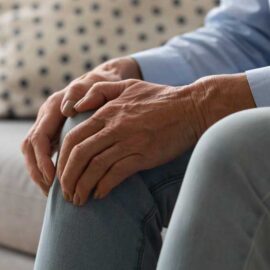The search for the fountain of youth — a spring, issuing from the ground, that produces water that will stop people from aging — has been part of our collective myth tradition for centuries. Many explorers have purportedly gone off in search of the fabled fountain, searching everywhere from the forests of Central America to the deserts of Africa and beyond.
Armed to the teeth, they were, with weapons of all kinds and flanked by entire armies, ready to do battle with any sentinels that stood between them and immortality. If they could but reach their hands into the blessed pool, the fear of disease and poverty would pass them by forever.
The Science of Aging
If only someone had told those misguided conquistadors that more than half of all age-related changes to bones, joints, and muscles are from disuse, rather than the “typical” effects of aging. It’s true that as we get older, our cells age along with us, affecting their ability to function at peak efficiency, but our personal habits of exercise and activity can stave off the worst results for a surprisingly long time.
The process of aging, in its simplest terms, is as follows:
- As we enter our 40s, our cells begin showing signs of aging.
- The mitochondria within our cells (the “power plants” needed for cells to function) produce less chemical energy and become less efficient.
- With weaker cells, other parts of our body start to decline as aging continues.
- We begin to see and feel the effects of aging in our energy, our looks, and our resilience.
This process affects every cell in our body, which naturally takes a toll on our bones. Osteoporosis becomes much more common in aging individuals, which precipitates the need to see one of the many accomplished Utah orthopedic surgeons, like Dr. John Skedros.
Avoiding the Tin Man Syndrome
Of course, any elbow surgeon or knee specialist is going to have patients come in and ask about the pain in their joints. Dealing with this cellular decline is a natural part of living, but there are certain things we can do to ensure that we don’t lock up like the Tin Man of Oz.
Because your joints are made up of bones, muscles, and cartilage, improvements that are made to your lifestyle — things that improve your heart, lungs, or weight — will have the added benefit of strengthening your joints.
Dietary Changes
Remember the old Got Milk? ads? There were hundreds of them, all featuring the famous milk mustache on a well-known celebrity. The ad copy would always have something to do with milk making your bones strong, and it’s true. By monitoring our diets, we can make life easier on our bone strength and bone density, meaning fewer trips to the shoulder surgeon.
- Drink More Water
Did you know that the cartilage that surrounds your joints is nearly 80% water? Unfortunately, they’re one of the first things targeted by your body when it needs to siphon water from other structures in order to keep the vital organs hydrated.
Cutting back on sugary drinks will also help your body feel more hydrated.
- Increase Your Calcium
Yes, the Got Milk? people were right — calcium makes your joints stronger. Did you know that you need to increase your calcium intake as you get older? Makes sense, right?
Between the ages of 19-50, you should have at least 1,000 milligrams every day. That number increases to 1,200 for females when they turn 51. Men are encouraged to follow suit once they hit 71 years old.
A better diet means a nicer visit with your chosen Utah orthopedic surgeon, as they will have an easier time assessing what changes need to be made to help you overcome your joint pain.
Health and Wellness
Somewhat separate from diet is an overall lifestyle that can affect the strength of your joints as you age. An elbow surgeon like Dr. Skedros may have a pointer or two for your tennis swing but a lot more of your joint pain will be dependent on how you’re living.
- Stay at a Manageable Weight
Weight gain is a plague that we all have to deal with, and it comes attendant with all sorts of issues that can affect the health of your heart, lungs, and blood, to say nothing of your joints and bones.
Spare the load placed on your joints by achieving an ideal weight for your frame. As load-bearing as they inherently are, our joints weren’t designed to carry an extremely heavy amount of weight for an extended period of time.
- Quit Smoking
Smoking has plenty of health risks associated with it, but one of the most overlooked is how it causes inflammation throughout the body. Too much inflammation will make it harder for your joints to recover from injury.
Needing some more motivation to take the leap into nicotine sobriety? The carbon monoxide levels throughout your body return to normal after just 8 hours of no smoking and your blood oxygen levels increase. This is good news for healthy bones, too.
- Exercise Regularly
Remember what we said at the beginning, how more than half of the muscle, cartilage, and joint issues we face in old age are due to inactivity? As the bones grow more brittle, we must up our game in other ways to keep up with this natural degeneration. Unfortunately, the weakness sometimes makes it harder for us to keep up with our once active lifestyle.
The best thing we can do for our joints as we age is to keep moving! Any Utah orthopedic surgeon will tell you that exercise (coupled with the tips we’ve already given) is the best way to find that fountain of youth.
If you have any questions about the health of your own joints, Dr. Skedros would be happy to speak with you.

